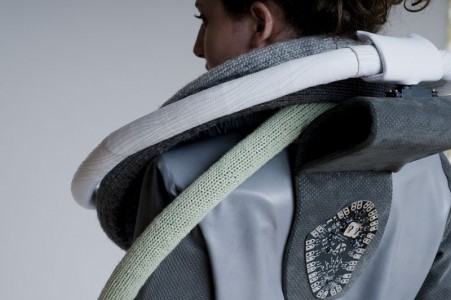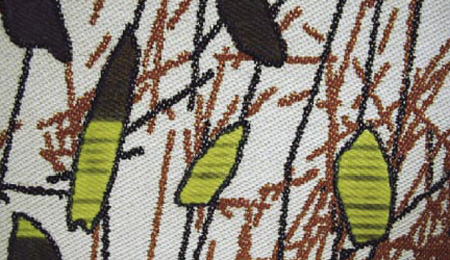[gallery] Joanna Berzowska of XS Labs shares her recent (and beautifully inspiring) catalogue that talks about her practice, design research methods in wearable technology and illustrates some of her gorgeous projects. Thank you for sharing Joanna! For all you wearable technology designers, it is definitely worth a read.
Download the PDF here.
Here's what she has to say about it:
I founded XS Labs in 2002, in my first year at Concordia University, and positioned it as a design research studio with a focus on innovation in electronic textiles and reactive garments. My interest in this field, however, did not originate from weaving, fashion design, or even fiber arts. It emerged from a concern with the lack of softness in HCI (Human Computer Interaction) and the desire to explore a wider range of material properties in the development of physical interfaces.
While a student at the MIT Media Lab in the mid 1990’s, I was drawn to electronic textiles for their ability to conform to the human body and their potential for bringing softness to physical interfaces. The work I was conducting in HCI focused on tangible interaction and involved the manipulation of physical objects with the human hand. I anticipated that electronic textiles would allow us to expand the realm of physical interaction into a wearable context and to explore the boundaries of what I call “beyond the wrist” interaction.
While Mark Weiser’s prophetic vision of Ubiquitous Computing has largely become reality, and computing technology is truly receding into the background of our awareness, [1] our relationship to materiality and design practices needs to evolve. The research directions that shape the field of HCI are still too often predicated on traditional definitions of computers and their intended uses. They do not consider the broad range of computational expression, technologies, and materials available to designers today.
In recent history, a scientific revolution has been redefining our fundamental design methods. [2] Materials such as conductive fibers, active inks, photoelectrics, and shape–memory alloys promise to shape new design forms and new experiences that will redefine our relationship with materiality and with technology. [3] Our design philosophy at XS Labs focuses on the use of these transitive materials and technologies as fundamental design elements.
The projects at XS Labs often demonstrate a preoccupation with — and a resistance to — task–based, utilitarian definitions of functionality in HCI. Our definition of function simultaneously looks at the materiality and the magic of computing technologies; it incorporates the concepts of beauty and pleasure. We are particularly concerned with the exploration of interactive forms that emphasize the natural expressive qualities of transitive materials. We focus on the aesthetics of interaction, which compels us to interrogate and to re–contextualize the materials themselves. The interaction narratives function as entry points to question some of the fundamental assumptions we make about the technologies and the materials that we deploy in our designs.
A core component of our research at XS Labs involves the development of enabling technologies, methods, and materials — in the form of soft electronic circuits and composite fibers — as well as the exploration of the expressive potential of soft reactive structures. Many of our electronic textile innovations are informed by the technical and the cultural history of how textiles have been made for generations — weaving, stitching, embroidery, knitting, beading, or quilting — but use a range of materials with different electro–mechanical properties. We consider the soft, playful, and magical aspects of these materials, so as to better adapt to the contours of the human body and the complexities of human needs and desires. Our approach often engages subtle elements of the absurd, the perverse, and the transgressive. We construct narratives that involve dark humor and romanticism as a way to drive design innovation. These integrative approaches allow us to construct composite textiles with complex functionality and sophisticated behaviors.
Joanna Berzowska 2010
1. Weiser, Mark. “The Computer for the Twenty-First Century.” Scientific American Sept. 1991: 94-104. Print.
2. Addington, Michelle, and L. Daniel Schodek. Smart Materials and New Technologies for the Architecture and Design Professions, London: Elsevier, 2005. Print.
3. Coelho, Marcelo, Sajid Sadi, Pattie Maes, Neri Oxman, and Joanna Berzowska. Transitive Materials: Towards an Integrated Approach to Material Technology. Proc. of the 9th International Conference on Ubiquitous Computing. Innsbruck, Austria, 2007.

